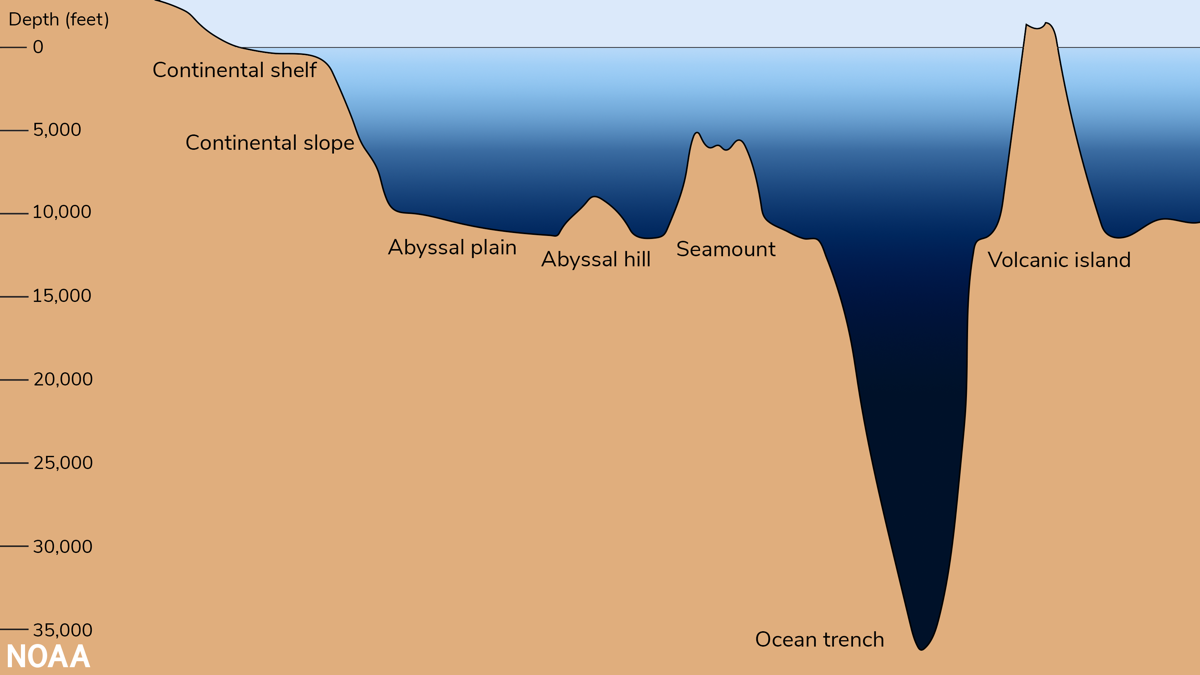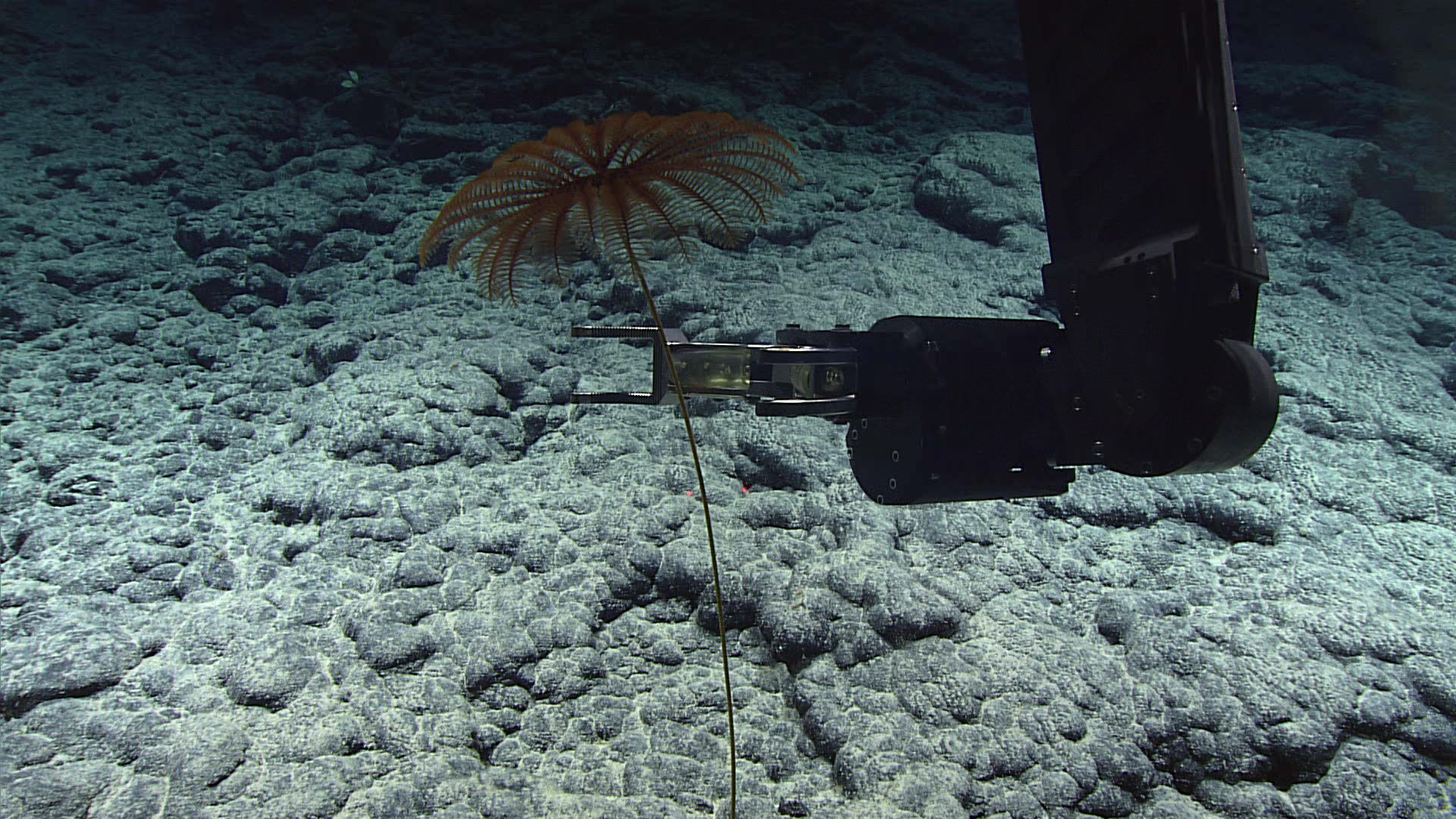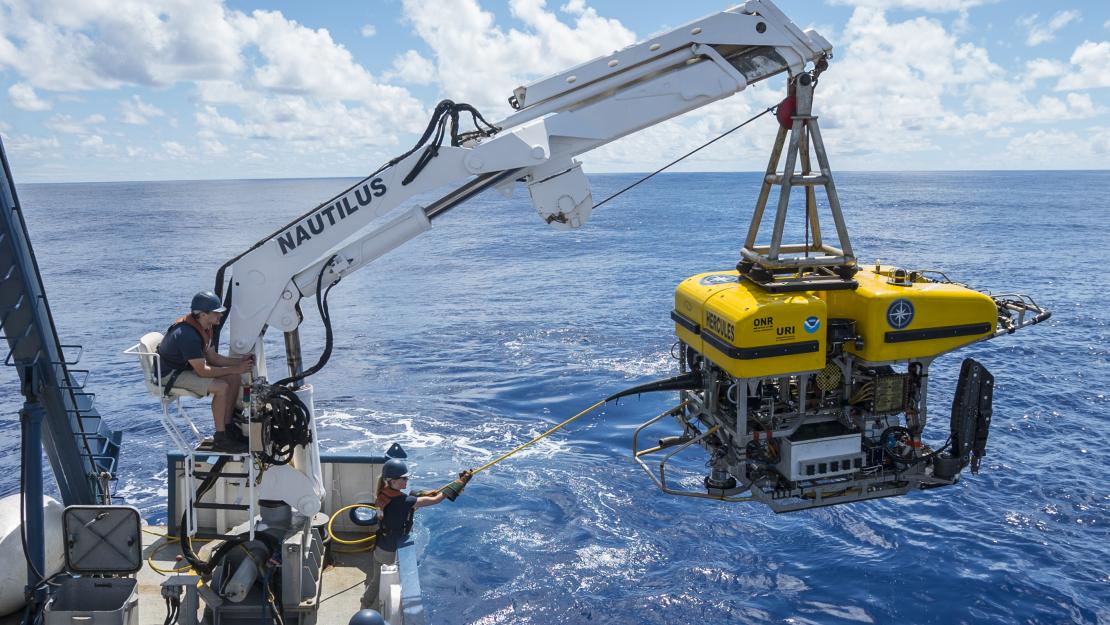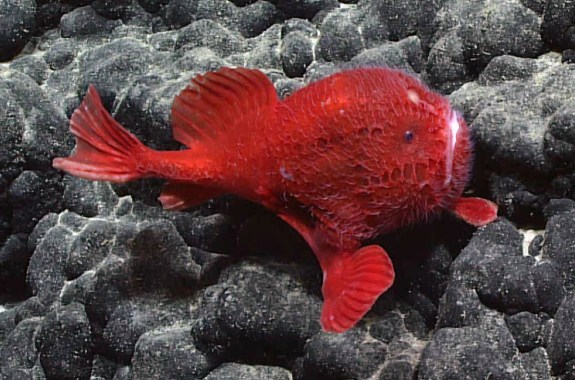Grade Level
All
minutes
60-90 minutes
subject
Life Science, Engineering and Tech
Activity Type:
informal education, Family activity, STEAM, Engineering design challenge
Deep in the darkest, coldest regions of the ocean live some of this planet’s most unique creatures. They inhabit a world unlike any other on Earth and are adapted to survive in extreme conditions. These strange and wonderful deep-sea organisms have the potential to reveal new medicines, vaccines, foods, energy sources, minerals, and more. However, many species in the deepest parts of the ocean are at risk of extinction due to climate change and pollution.
Over 80% of the world’s oceans are unmapped, unobserved, and unexplored. Scientists estimate that less than 10% of ocean species have been discovered as of today. That means researchers have a lot of work ahead of them! But it isn’t easy to explore the deep ocean —the pressure is 100 times that on land, temperatures are near freezing, and the complete darkness makes it impossible for people to explore on their own. Because they are so inaccessible, researchers use special sensors or remotely operated vehicles (ROVs) to explore these habitats instead.
Your challenge is to invent a method to explore the deep ocean and discover the fantastic organisms hiding there.
Deep Sea Dive: NOAA scientists are exploring the deepest parts of the ocean. Credit: NOAA Ocean Today
Activity 1: Exploring Without Sight
Most of the ocean is not visible from the surface. What is it like to observe and understand something without using your sight? In this first activity, you’ll try to describe and identify items using only your sense of touch.
Materials:
- Paper lunch bags (one per team of 2-3 learners if in a class setting)
- 5-10 small objects such as a toy car, a pink eraser, a marshmallow, a capped pen or marker, a house or car key, coins, etc. Ensure all the items are everyday items kids are familiar with. Try to vary the textures and sizes of the objects. Safety note: Make sure nothing is sharp. No pins or scissors, for example.
- Blindfold (optional)
- Paper and pencils to record observations
Note: You may want to staple or clip the bag closed so items do not fall out.
Have a parent, educator, or friend place items in the bag and close it. It’s crucial you don’t know what’s in the bag before you start the investigation.
Here’s what to do:
- You need to identify all the items in the bag as precisely as possible. To do this, you can only use your sense of touch. You may not look inside the bag at any time.
- If working with a group, take turns reaching into the bag, grabbing an item gently, and describing it to your team as specifically as possible. Do not remove the item from the bag. If working on your own, you will identify each object yourself.
- You or your team will take notes or make sketches, and you will try to figure out what you are touching. You may handle items more than once. Keep going until you think you know what everything is.
- Once you have finished your investigation, open the bag and remove the items. Compare them to the notes you made.
Ask yourself:
- How close did I come to identifying everything?
- What was easy to identify? Why?
- What was challenging to identify? Why?
- What would have made it easier to accomplish this task?
Activity 2: Designing For The Deep
Imagine you are a marine biologist and want to study the Giant Squid and other animals that live in the deepest, darkest, and coldest parts of the ocean. How would you do that? What would you build to make it possible to explore those dangerous waters? In this video, you’ll hear how one scientist uses artifacts from the stomachs of whales to estimate how many giant squid live in the world’s oceans.
Materials:
- Blank or graph paper
- Pencil
- Ruler (optional)
- Scissors
- Safety cardboard cutter (optional but suggested; older learners may use a craft knife)
- Tape (clear, masking, duct)
- Glue (white craft glue or hot glue, depending on the age)
- Scrap cardboard
- Upcycled or scrap items such as toilet paper tubes, drinking straws, paper plates, plastic water bottles, chopsticks, leftover yarn or string, etc. Get creative!
- Foil and/or plastic wrap (optional)
- Paint and/or markers (optional)
- Diagram of the ocean floor (optional)
- Additional resources
- Deep Ocean Creatures (NOAA, 1:48 min)
- Additional NOAA Marine Life videos
Safety note: When using scissors, cutting tools, and hot glue, protect your hands and eyes. Cover surfaces while working.
In this activity, you will need to design and prototype or model equipment that will allow you to study organisms on the ocean floor at depths of at least 10,000 feet (about 3,000 meters or just under 2 miles) below the surface. Before you start designing or building, here are some questions to ask yourself:
- What kinds of organisms might you find deep in the ocean?
- What types of things would you want to know about them?
- How can you safely collect information (data) about these organisms?
- How can you collect samples of these organisms? Would it be ethical and safe to collect samples of these organisms? Why or why not? How can you collect samples ethically?
- How can you get that information or those samples from the ocean floor to the surface? What form would that information take?
- What aspects of the deep ocean may make it challenging to collect data or samples?

Think about how you invention would collect either data about deep ocean organisms or samples of them. Think about how it would able to send that data or samples to the surface so scientists can analyze the information.
For this activity, you will create a drawing, model, or prototype of your invention. A model represents an idea or object, while a prototype is a functional model meant to be tested in some way. If you challenge yourself by making a prototype, you should also determine how to test it to see if it works. It’s always a good idea to draw or sketch your invention as part of your planning before you start building. Whatever you make, it should be big enough to demonstrate your idea clearly. As an extra challenge, use scrap or recycled materials as building materials!
Deep Sea Dive Introduction: Start exploring the dark, deep sea with host Symone Johnson. Credit: NOAA Ocean Today.
Share Your Invention
Share your invention with others in your class or with friends and family. Ask them for feedback. How could you improve upon your design?
Other questions to ask yourself might include the following:
- What was the hardest part of the challenge? Why?
- What was the easiest part of the challenge? Why?
- What is your favorite thing about what you made?
- What would you improve if you were to keep designing?

Deeper Dive
Want to keep learning about the deep ocean’s mysteries (and science)? Try these activities next!
- High Pressure in the Deep Ocean: Everything in the deep ocean is under a great deal of pressure. At any depth in the ocean, the weight of the water above pushes on any object below it. To explore the ocean floor, scientists and explorers must first overcome one of the biggest challenges of deep ocean exploration: extreme pressure.
- ROVs: The Swiss Army Knife Of The Ocean: The deep blue ocean is dangerous and hard to get to for humans. Remotely operated vehicles, or ROVs, are robots specially created for ocean exploration that are tethered with steel and fiber optic cables to a control vehicle on the ocean’s surface. These versatile machines keep deep sea explorers above water where it’s safer, but is operating an ROV really just like operating a big remote control car?
- Design A Device That Can Safely Collect A Jellyfish: The jellyfish in the ocean share a number of characteristics with the jelly in your refrigerator. And that’s a pretty big problem for scientists who study jellyfish. How do you catch and hold a fragile blob creature without crushing, squishing, or damaging it in some way?
- How Do We Keep Microplastics Out Of The Ocean? Filtration, Naturally: Model a bioretention cell! Experiment to understand how microplastics are getting into the ocean—and the ocean food chain.
- Interpret The Impacts Of Rising Ocean Temperatures On Ecosystems: Where do fish go when the water gets warm? It depends on the species.

NGSS Standards
- K-2-ETS1-1: Ask questions, make observations, and gather information about a situation people want to change to define a simple problem that can be solved through the development of a new or improved object or tool.
- K-2-ETS1-2: Develop a simple sketch, drawing, or physical model to illustrate how the shape of an object helps it function as needed to solve a given problem.
- 3-5-ETS1-1: Define a simple design problem reflecting a need or a want that includes specified criteria for success and constraints on materials, time, or cost.
- 3-5-ETS1-2: Generate and compare multiple possible solutions to a problem based on how well each is likely to meet the criteria and constraints of the problem.
- 3-5-ETS1-3: Plan and carry out fair tests in which variables are controlled and failure points are considered to identify aspects of a model or prototype that can be improved.
- MS-ETS1-1: Define the criteria and constraints of a design problem with sufficient precision to ensure a successful solution, taking into account relevant scientific principles and potential impacts on people and the natural environment that may limit possible solutions.
- MS-ETS1-2: Evaluate competing design solutions using a systematic process to determine how well they meet the criteria and constraints of the problem.
- HS-ETS1-2: Design a solution to a complex real-world problem by breaking it down into smaller, more manageable problems that can be solved through engineering.
- HS-ETS1-3: Evaluate a solution to a complex real-world problem based on prioritized criteria and trade-offs that account for a range of constraints, including cost, safety, reliability, and aesthetics, as well as possible social, cultural, and environmental impacts.
Credits
Lesson by Sandy Roberts.
Copyediting by Emma Gomez.
Digital Production by Sandy Roberts.
Educator's Toolbox
Meet the Writer
About Sandy Roberts
Sandy Roberts is Science Friday’s Education Program Manager, where she creates learning resources and experiences to advance STEM equity in all learning environments. Lately, she’s been playing with origami circuits and trying to perfect a gluten-free sourdough recipe.
